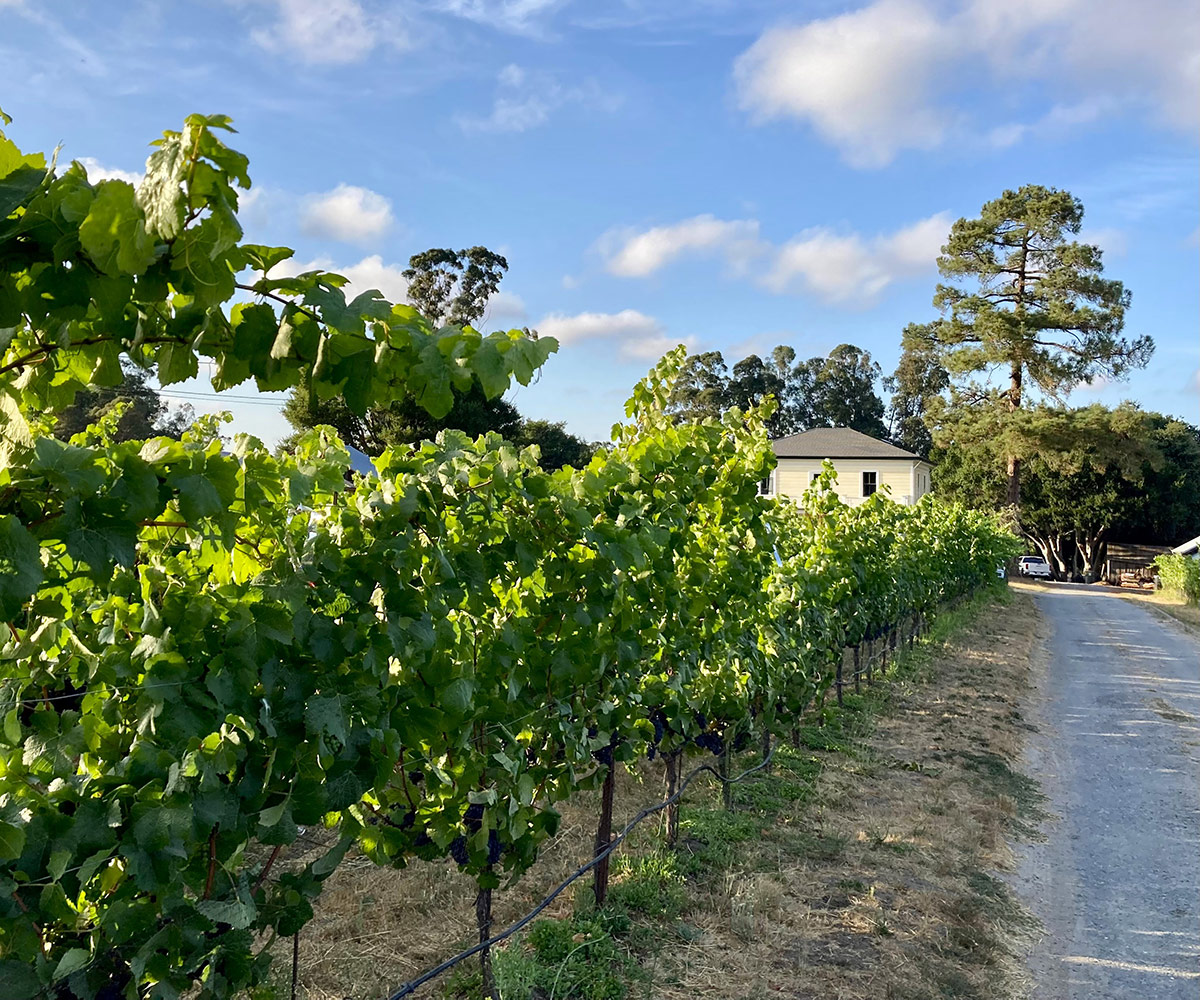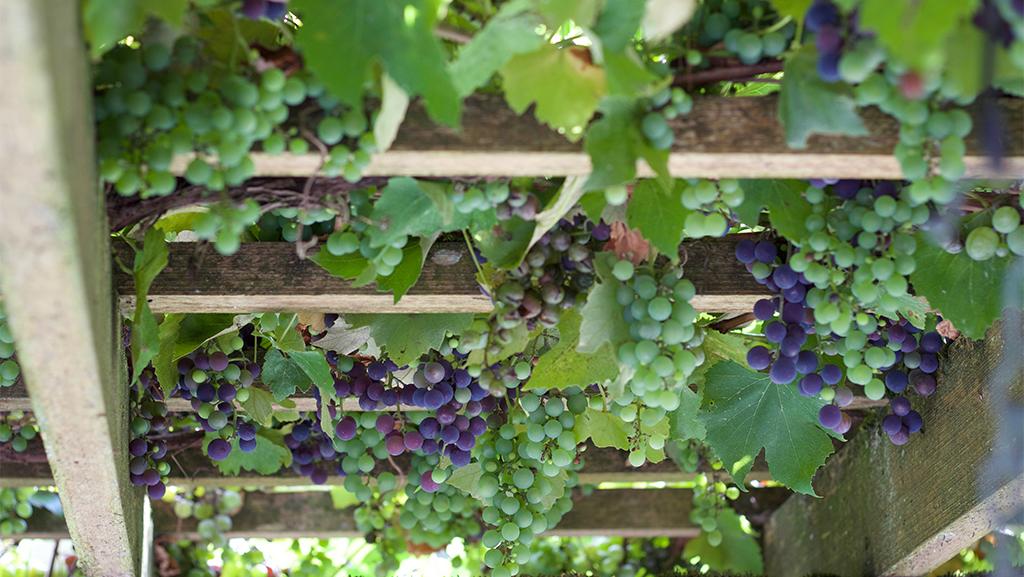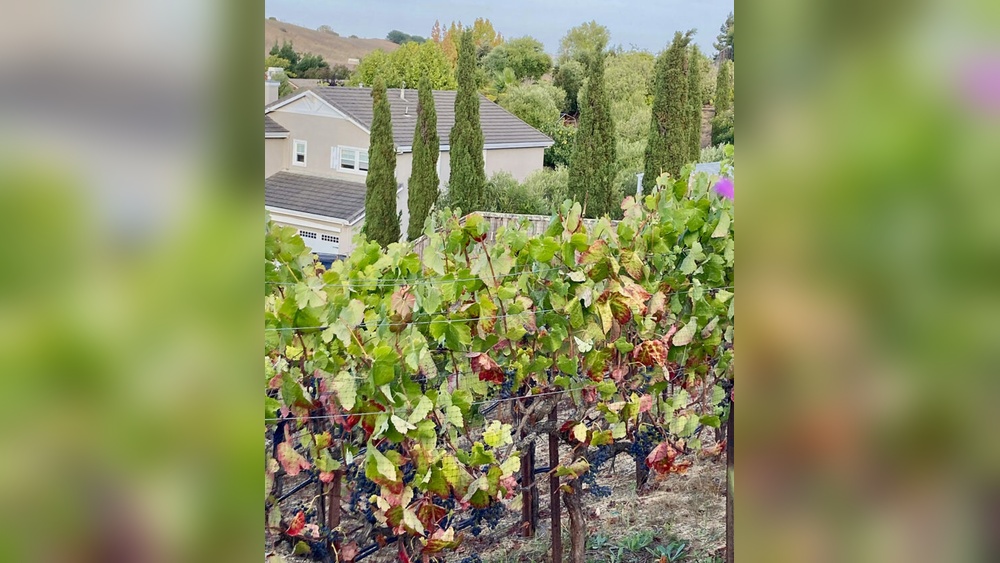As an Amazon Associate, I earn from qualifying purchases.
Are you ready to transform your backyard into a lush, fruitful oasis? Growing grapevines right at home can bring a touch of elegance and a bounty of delicious grapes to your garden.
Imagine stepping outside and picking fresh, juicy grapes for your snacks, salads, or even homemade wine. It’s easier than you think, and with the right guidance, your grapevines can thrive in Austin’s unique climate. Keep reading to discover how you can start growing healthy grapevines in your backyard, what to expect during the journey, and tips to ensure your vines produce sweet, abundant fruit year after year.
Your perfect backyard vineyard awaits!

Choosing The Right Grapevines
Choosing the right grapevines is key for a successful backyard garden. Grapevines vary in size, taste, and care needs. Selecting varieties suited to your space and climate helps ensure healthy growth and good fruit. This guide explains the best types and important factors for Austin, Texas gardeners.
Best Varieties For Backyard Gardens
Some grape varieties grow better in small gardens. Concord and Niagara grapes produce large, sweet clusters. They are hardy and easy to manage. Flame Seedless grapes offer a crisp texture and bright red color. Muscadine grapes thrive in warm climates and resist pests well. These varieties suit backyard gardeners seeking fresh fruit and shade.
Seedless Vs. Seeded Grapes
Seedless grapes are popular for snacking and cooking. They have no hard seeds inside, making them easy to eat. Seeded grapes often have richer flavors and thicker skins. These are good for jams and wine. Decide based on taste preference and use. Seedless types often ripen earlier, which helps in short growing seasons.
Climate Considerations In Austin, Texas
Austin has hot summers and mild winters. Grapevines need full sun and well-drained soil here. Choose heat-tolerant varieties like Muscadine or Black Spanish. These withstand high temperatures and humidity. Avoid grapes that need long cold periods. Regular watering during dry spells supports strong growth. Proper vine placement can reduce disease risk.
Planting Grapevines
Planting grapevines in your backyard garden can bring beauty and delicious fruit. It needs careful planning and the right conditions. Starting with good planting practices helps vines grow strong and healthy.
Ideal Planting Time
Plant grapevines in early spring. The soil should be thawed but not wet. This timing helps roots settle before hot weather arrives. Avoid planting in late fall or winter. Young vines may suffer from cold damage.
Soil Preparation Tips
Grapevines prefer well-drained soil with good fertility. Remove weeds and debris before planting. Loosen the soil to a depth of 12 inches. Mix in compost or organic matter to improve soil structure. Avoid heavy clay or waterlogged soil. Test soil pH; ideal range is 5.5 to 7.0. Adjust pH with lime or sulfur if needed.
Spacing And Placement
Space grapevines 6 to 10 feet apart. Proper spacing allows air circulation and sunlight exposure. Choose a sunny spot with at least six hours of direct light daily. Avoid low areas where frost can settle. Use trellises or supports to help vines climb and spread. This setup improves fruit quality and ease of harvest.
Training And Supporting Vines
Training and supporting grapevines is essential for a thriving backyard garden. Proper support helps vines grow strong and healthy. It also makes harvesting grapes easier. Without support, vines may sprawl on the ground, risking damage and disease. This section covers simple ways to train and support grapevines effectively.
Trellis Options For Small Spaces
Small gardens need space-saving trellis ideas. Vertical trellises use minimal ground area. You can build them from wood, metal, or wire. A simple A-frame trellis fits well in corners. Wall-mounted trellises save even more space. Choose materials that resist weather and support heavy vines. Proper trellis design keeps vines off the ground. It improves air circulation and sunlight exposure.
Pruning Basics For Healthy Growth
Pruning controls vine shape and fruit production. Remove dead or weak shoots early. Cut back excess growth to focus energy on fruiting branches. Prune during late winter or early spring before new growth. Use clean, sharp tools for neat cuts. Proper pruning reduces disease risk. It also encourages larger, sweeter grape clusters.
Encouraging Vertical Growth
Guide vines upward to maximize garden space. Tie young shoots gently to trellis wires with soft ties. Adjust ties as vines grow to avoid damage. Train main canes vertically, leaving side shoots for fruit. Vertical growth improves sunlight access and air flow. It also makes maintenance and harvesting simpler. Consistent training shapes strong, productive grapevines.

Watering And Fertilizing
Proper watering and fertilizing play a key role in growing healthy grapevines in your backyard garden. Grapevines need balanced moisture and nutrients to develop strong roots and produce sweet fruit. Understanding the needs of young and mature vines helps you care for them effectively. Feeding your grapevines the right fertilizer supports growth and fruit production. Watching for signs of nutrient deficiency ensures timely care and keeps your plants thriving.
Watering Schedules For Young And Mature Vines
Young grapevines need regular watering to establish roots. Water them deeply once or twice a week. Avoid overwatering as it may cause root rot. Mature vines require less frequent watering. They benefit from deep watering every 10 to 14 days. Check soil moisture before watering to prevent excess water. Drip irrigation works well for consistent moisture without wetting leaves.
Choosing The Right Fertilizer
Select a balanced fertilizer with nitrogen, phosphorus, and potassium. Use fertilizer with a ratio like 10-10-10 for general growth. Apply fertilizer in early spring before new growth starts. Avoid excessive nitrogen as it promotes leaves but reduces fruit. Organic options such as compost or manure improve soil health. Follow package instructions for proper application rates.
Signs Of Nutrient Deficiency
Yellowing leaves may indicate nitrogen deficiency. Pale or distorted leaves suggest lack of magnesium or iron. Poor fruit development can signal phosphorus shortage. Slow growth or weak stems might mean potassium is low. Regularly inspect grapevine leaves and stems for changes. Correct deficiencies promptly with suitable fertilizers or supplements.
Pest And Disease Management
Managing pests and diseases is vital for healthy grapevines in your backyard garden. Pests can damage leaves, stems, and fruit, reducing your harvest. Diseases may stunt growth or kill the vine if untreated. Early detection and proper care keep your grapevines strong and productive.
Common Backyard Pests
Grapevines attract several common pests. Grape leafhoppers suck sap from leaves, causing yellow spots. Spider mites create webs and damage foliage, making leaves dry and fall off. Japanese beetles chew on leaves and fruit, leaving holes and scars. Watch for these pests regularly to act fast.
Preventing Mouse And Vole Damage
Mice and voles can harm grapevines by gnawing on roots and bark. This damage weakens the vine and may kill it. Keep grass and weeds trimmed near your grapevines to reduce hiding spots. Use wire mesh around the vine base to block rodents. Traps also help control their population safely.
Organic Pest Control Methods
Organic methods protect your grapevines without chemicals. Neem oil sprays deter many insects and fungal diseases. Introducing beneficial insects like ladybugs controls aphids naturally. Use insecticidal soaps to remove soft-bodied pests. Regularly clean fallen leaves and prune infected parts to reduce disease spread.

Harvesting And Maintenance
Harvesting and maintaining grapevines in your backyard garden ensures a healthy, fruitful vine year after year. Proper care during harvest and throughout the growing season keeps grapes sweet and plants strong. This section covers key tips to help you enjoy fresh grapes and protect your vines.
When Grapes Are Ready To Pick
Grapes are ripe when they taste sweet and juicy. The color should be deep and uniform. Test a few grapes from different parts of the vine before harvesting. Grapes do not continue to ripen after picking. Harvest carefully by cutting clusters with sharp scissors. Pick in the morning for best flavor and firmness.
Protecting Fruit From Birds
Birds love ripe grapes as much as you do. Use bird netting over the vines to keep them away. Hanging shiny objects like aluminum foil strips can scare birds off. You can also try placing scarecrows or reflective tape nearby. Check nets regularly to avoid trapping wildlife. Protecting grapes early helps preserve your harvest.
Seasonal Care Tips
Water grapevines deeply once a week during dry spells. Mulch around the base to keep moisture in and weeds out. Prune vines in late winter to remove dead wood and shape the plant. Fertilize in early spring with a balanced fertilizer. Watch for pests and diseases, treating them quickly if found. Good care boosts grape quality and vine health.
Long-term Vine Care
Long-term care is essential for healthy grapevines in your backyard garden. Proper maintenance helps vines produce fruit for many years. It also keeps the plants strong and disease-free. Regular attention to your vines ensures they thrive season after season.
Extending Vine Productivity
Prune grapevines every year to encourage new growth. Remove old, weak branches and keep strong shoots. Provide balanced fertilizer in early spring to boost fruit production. Water the vines deeply but avoid overwatering to prevent root problems. Train the vines on sturdy trellises to support heavy grape clusters.
Winter Care And Protection
Prepare grapevines for cold weather by cutting back long shoots. Mulch the base with straw or leaves to protect roots from freezing. Cover young vines with burlap or frost cloth in harsh winters. Avoid pruning late in the season to prevent frost damage. Check vines regularly for signs of winter injury.
Rejuvenating Older Vines
Older grapevines may slow in fruit production but can recover. Start by cutting back one-third of the oldest wood each year. This encourages fresh shoots and improves air circulation. Remove dead or diseased wood promptly. Apply compost or organic matter around the base to enrich soil. With patience, older vines can regain vigor and yield.
Frequently Asked Questions
How Many Years Does It Take For A Grape Vine To Fruit?
Grape vines typically take about three years to produce fruit. Early fruiting can stress the vine and reduce quality. Mature grape vines can bear fruit for several decades.
Is It Hard To Grow Grapes In Your Backyard?
Growing grapes in your backyard is manageable with proper care. Choose a sunny spot, well-drained soil, and prune regularly. Patience helps; vines usually fruit after three years. Regular watering and pest control improve success.
What Month Do You Plant Grape Vines?
Plant grape vines in May or June, after the threat of frost has passed, for best growth and fruit production.
Do Grape Vines Attract Mice?
Grapevines can attract mice due to fallen fruit and shelter. Removing debris and harvesting grapes promptly reduces this risk.
How Long Does It Take For Grapevines To Bear Fruit?
Grapevines usually start producing fruit in about three years after planting.
Conclusion
Growing grapevines in your backyard brings beauty and fresh fruit. They start to bear fruit after about three years. Grapevines thrive with proper care and sunlight. Pruning helps keep the plants healthy and productive. Enjoy the process of watching your garden grow.
Backyard grapevines add charm and tasty rewards. Try planting one and experience nature’s simple joy.

